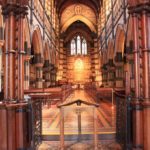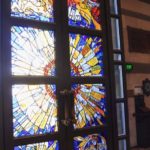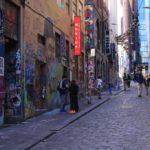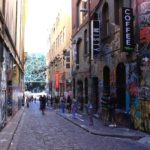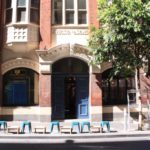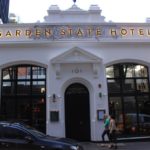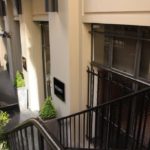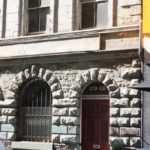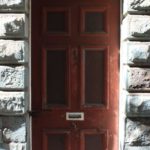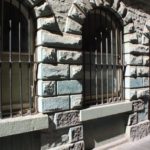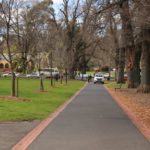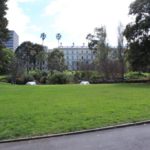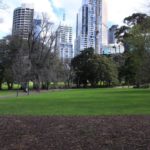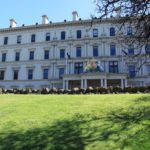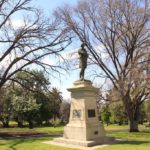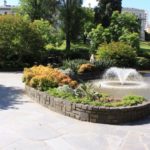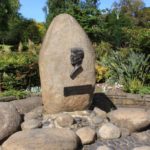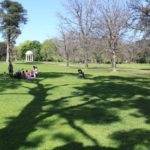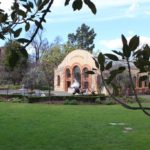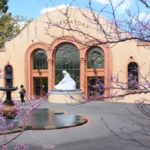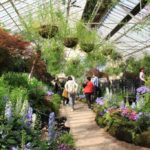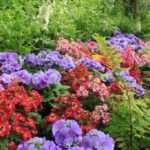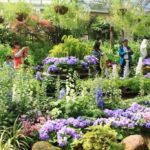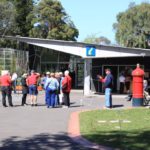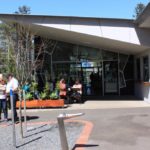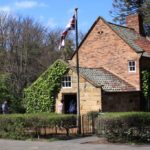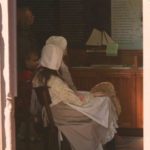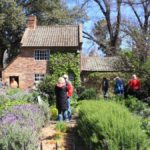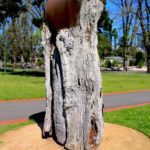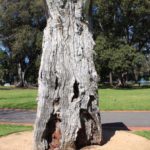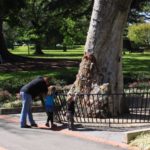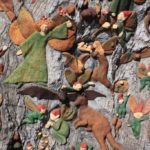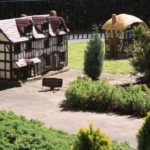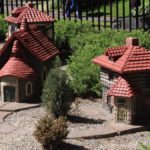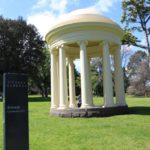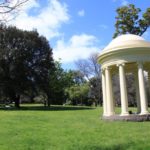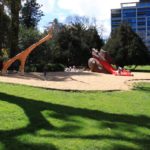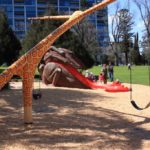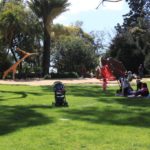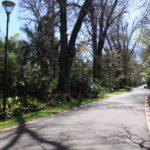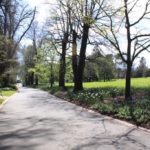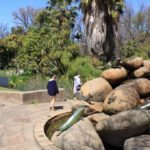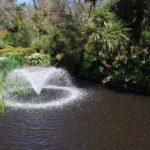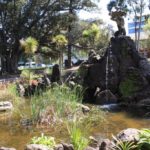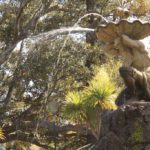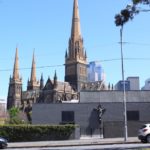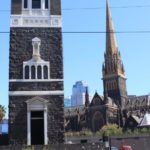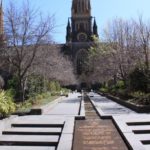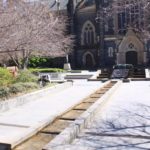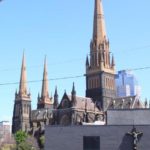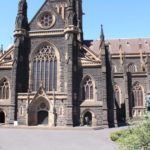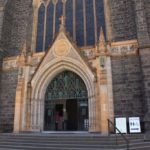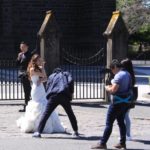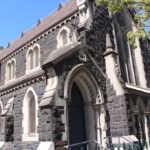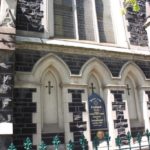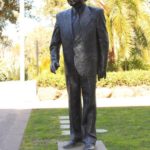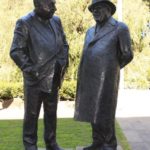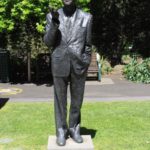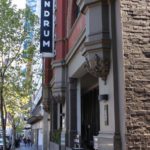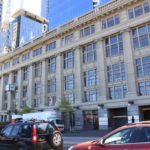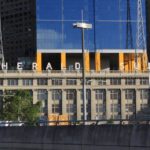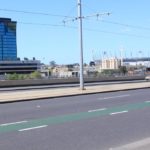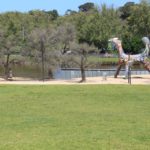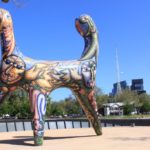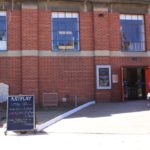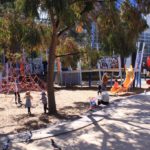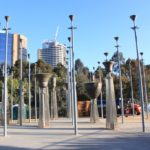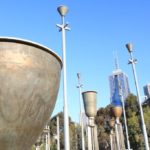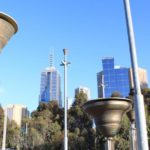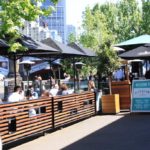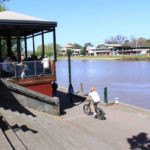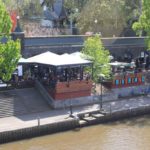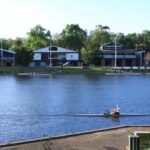A walk in the park
This walk will take you through Melbourne’s quiet and gracious parliamentary precinct houses, magnificent churches and also federal government buildings. These buildings were constructed during the Gold Rush boom period between mid to late 19th century.
The walk will also take you through the classic Victorian elegance of the Fitzroy Gardens.
For this walk tour, we’ll use the tour guide brochure No. 1 – A Walk in the Park.
You can pick up a copy of this brochure (the current design) from the Melbourne Visitor Booth in the Bourke Street Mall or the Federation Square.
You can also download a copy here.
1. Federation Square

Start your walk from Federation Square.
2. St Paul’s Anglican Cathedral
Opposite the Federation Square is the St Paul’s Anglican Cathedral. Have a 10 minute tour of the interior of the cathedral. You will be amazed.
3. Matthew Flinders
The statue of Matthew Flinders is located at the Swanston Street entrance of the cathedral.

4. Hosier Lane
Go back up on Flinders Street and walk to Hosier Lane. This is the famous graffiti lane of Melbourne. The graffiti are ever changing, sometimes overnight!
5. Flinders Lane
At the end of Hosier Lane is Flinders Lane.
Flinders Lane used to be the home to garment business in Melbourne, mainly controlled by Jews. Many of the buildings in Flinders Lane were former warehouses to store garments.
Today many of these warehouses are still standing and some have been converted to restaurants, bars and galleries. Here are just some of them.
6. Levy and Robinson’s Warehouse (129 – 131 Flinders lane)
This building was built in 1857 for Levy and Robinson and it was used as a warehouse then. It’s not surprising it is called ‘Levy and Robinson’s Warehouse’.
7. Milton House
Continue on Flinders Lane and just before Spring Street is the Milton House. It was built in 1901 and was used as a hospital particularly to fight tuberculosis.

8. Treasury Gardens
Cross Spring Street and you will be at the entrance to Treasury Gardens.
Treasury Gardens is one of the two biggest gardens in East Melbourne. The garden is beautifully landscaped with matured elms and Moreton Bay fig trees.
9. Robert Burns
As you stroll in the garden, you can notice a number of monuments. The first one nearest to Spring Street is Robert Burns monument.
10. John F. Kennedy
The John F. Kennedy’s monument is a bit tricky to find. Hint: it is located near a pond with a fountain.
11. Fitzroy Gardens
Cross Lansdowne Street and enter Fitzroy Gardens.
Fitzroy Gardens is the biggest garden in East Melbourne, covering an areas of 26 hectares (64 acres). The garden was named after Sir Charles Augustus Fitzroy, who was the Governor of New South Wales in 1845.
12. Conservatory
Also look out for the Conservatory, which is located on the southeastern corner of Fitzroy Gardens.
The design is of Spanish Mission-style architecture and there are five separate display of flora during different seasons of the year.
Enter the Conservatory and enjoy the flora display.
13. Fitzroy Gardens Visitor Centre
The Fitzroy Gardens Visitor Centre is a recent addition and was opened in December 2014.
The staff of the centre are very passionate about gardens and are very knowledgable about Fitzroy Gardens. If you are keen to know more about Fitzroy, speak to one of the staff and you will be delighted.
There is also a café next to the visitor centre and the café provides free wifi.
14. Cooks’ Cottage
Cooks’ Cottage was constructed in 1755 in England and was Captain James Cook’s parents home.
It was dismantled brick by brick and then shipped to Australia. It was then re-assembled in Melbourne.
To spice up the cottage, volunteers dressed up in the 18th century costumes to welcome visiting tourists.
There is an entry fee to further explore the interior of the cottage.
15. Scarred Tree
Further up the path, look out for the Scarred Tree.
The Scarred Tree is a symbol to impress that the Aboriginal people were here long before the European settle in Australia.
16. Sinclair’s Cottage
Walk back slightly and turn right on the walk path, which will lead you to Sinclair’s Cottage.
The cottage was built in 1866 and was James Sinclair’s home. James Sinclair was the head gardener in 1857 and remained so till his death in 1881.
17. Fairies’ Tree
Near the Pavilion Café is the Fairies’s Tree. It is also known as Ole Cohn’s Fairy Tree after the name of the sculptor, Ole Cohn. It was a gift to the ‘children and fairies’ of Melbourne from the 1930s.
18. Model Tudor Village
Just beside the Fairies’ Tree is the Model Tudor Village.
This a cluster of miniature village, which was presented to the people of Melbourne from the City of Lambeth, in South London.
This was in appreciation of the Victorians’ generosity to send food to Britain during World War II.
19. Children’s Playground
Fitzroy Gardens is not only made for grown up but also for children. Further up the walk path is a children playground.
On the way to the playground, you will come across this interesting structure, ‘Rotunda’, which was apparently built in 1873.
The playground is cleverly designed with an animal motive. Great for the kids.
20. The English Elms
When the British came to settle in Australia in the early 19th century, they brought with them elms to be planted here. With the disappearance of elms in the northern hemisphere, Australian elms are regarded the most significant in the world.
Along the path walk, you will come across an open area that has an ornamental fountain, which is the Dolphin Fountain. This is not mentioned in the brochure.
21. River God
Walk along the pathway toward Albert Street and just before reaching the street is the fountain, River God.
This sculpture was built in 1862 by Charles Summer and it one of the major pieces of statuary in the garden.
22. St Patrick’s College
Follow the walk pathway towards Lansdowne Street and cross the street to Cathedral Place.
Just across Landsdowne Street is the St Patrick’s College.
23. Pilgrim Path
Continue walking up Cathedral Place and you will come to the side entrance of the cathedral.
Here you will see a pathway, which has a water fountain running in the middle of the pathway. This pathway is called The Pilgrim Path.
24. St Patrick’s (Catholic) Cathedral
St Patrick’s Cathedral is the largest church in Victoria. The cathedral was designed by the architect, William Wardell and the design was based on classic Gothic style of the Fourteenth Century.
The cathedral was constructed in stages, between 1858 and 1897, due to a shortage of labor during that time. During the period there was gold rush and most of the labourers were attracted to the gold mines.
The three spires was only added in 1930.
25. Stone Inlay
At the forecourt, the Stone Inlay combines Aboriginal and Christian symbols to depict the Creator Spirit.

26. Lutheran Church
Walk down MacArthur Street, towards the city, you will pass the Lutheran Church. The church is also called the German Lutheran Church, which was built in 1853.
27. Premiers’ Statues
Walk through the Treasury Reserve and at the end of Premiers’s Way are the statues of John Cain, Sir Henry Bolte and others.
28. Government Buildings
Enjoy the view of the government building cluster here.
29. 1 Treasury Place
The current Premier’s Office is located in this building, which is No. 1 Treasury Place.

30. Hotel Lindrum
Pass through Treasury Garden and turn right into Flinders Street. Right at the corner is Hotel Lindrum.
31. Herald Building
Further down Flinders Street is the old Herald Building, which was built in 1920s.
32. Birrarung Marr
From Herald Sun building, turn left into Batman Avenue and cross the bridge over the railway track. At the end of the bridge, head down to Birrarung Marr.
The word ‘Birrarung Marr’ comes from the Woiwurrung language of the Wurundjeri people, who were the indigenous people before the coming of the European settlers.
‘Birrarung’ means ‘river of mists’ and ‘Marr’ means ‘side of the river’.
Birrarung Marr was opened in 2002 with the goal to provide a venue for supporting sporting and cultural events.
Major events such as Moomba Waterfest, Circus Oz, changing sculpture exhibitions and many other community festivals are held here at different time of the year.
There are also activities for children. Stop by the children’s art centre and gallery ArtPlay, which organizes creative activities. There is also a children playground beside the art centre.
33. Federation Bells
Walk back towards Batman Avenue and the William Barak Bridge, you will come to Federation Bells, which is located in the centre of Birrarung Marr.
There are 39 upturned electronic bells that made up the Federation Bells. The bells were to commemorate the centenary celebrations of Australia’s federation in 2001.
More than 100 compositions have been composed for the Federation Bells and the bells chime three times daily. The timing are 8-9am, 12.30-1.30pm and 5pm-6pm.
You can try your creativity with your smart phones by downloading Federation Bells app and connecting to the Federation Bells wi-fi network.
Check here for more details.
34. Federation Square
Walk back towards the the two-headed Angel and follow the river back to Federation Square.
This is the end of the walk tour. Hang around the many cafés along the river and watch the world pass by.
We hope you have enjoyed the tour. Please do leave us a positive comment below and share us on your favourite social media.
Thank you!




